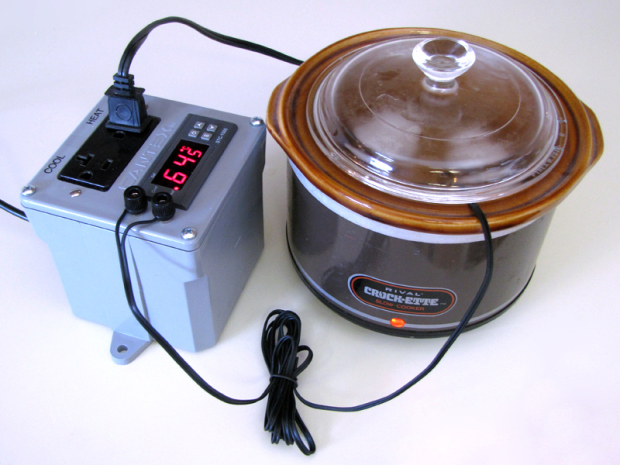This project was inspired by Cooking for Geeks author Jeff Potter’s quick DIY sous-vide hack. My plan, initially, was to just hack the controller into an enclosure with an A/C outlet, the idea being that you could just plug any heater you wanted into the outlet.
Looking around for cheap temperature controllers, however, I happened across the STC-1000 on eBay for $25. It’s not PID, but I was betting it would still be accurate enough for almost any practical purpose. And since the STC-1000 has both heating and cooling functions built-in, the logical next step seemed to be to split a single A/C outlet so that you could plug a heater or a cooler (or both) into it and use it for all kinds of stuff.
The STC-1000 will regulate at any temperature between the freezing and boiling points of water, which opens up potential applications in chemistry, aquaculture, zymurgy, hydroponics, cooking, etc., etc.



